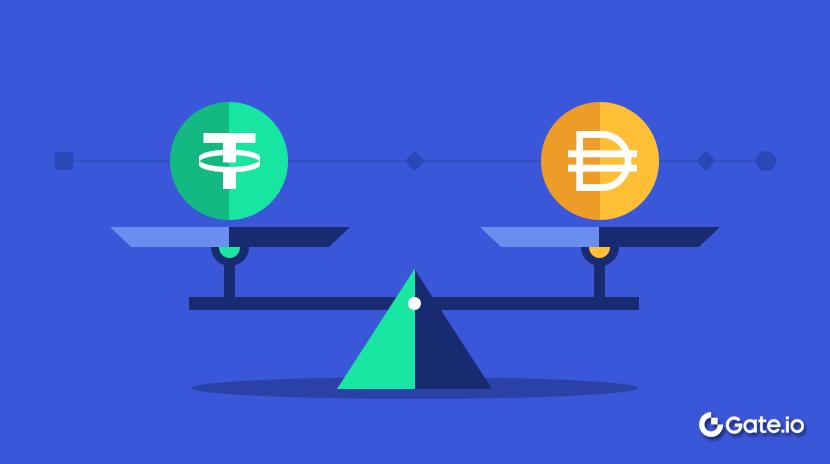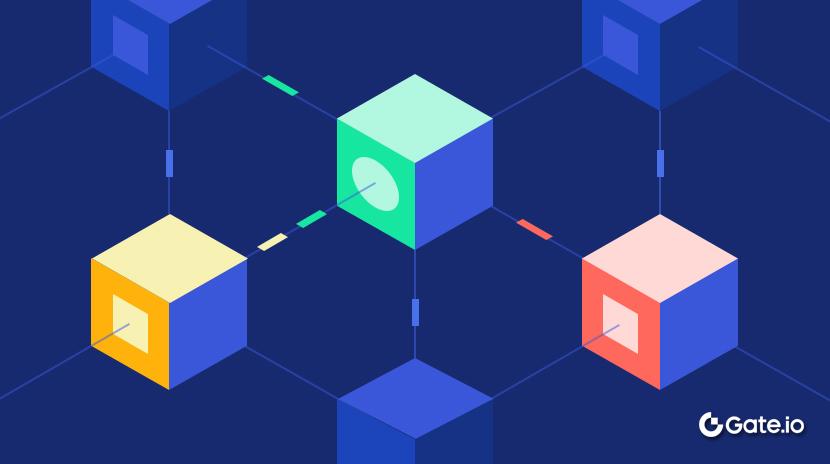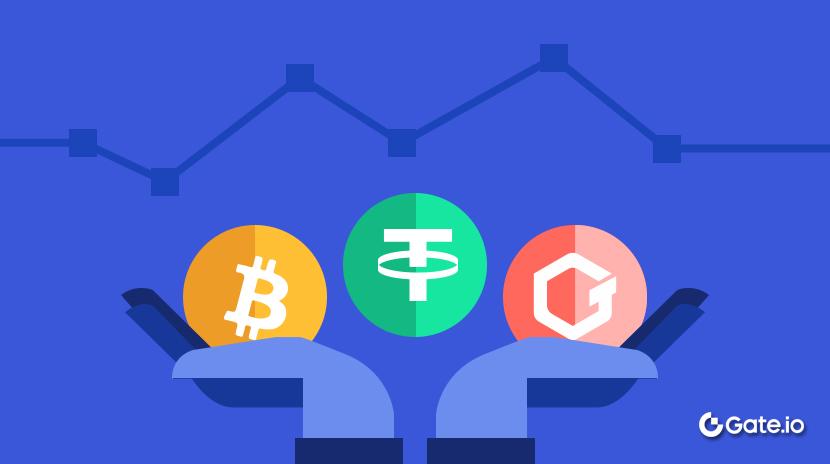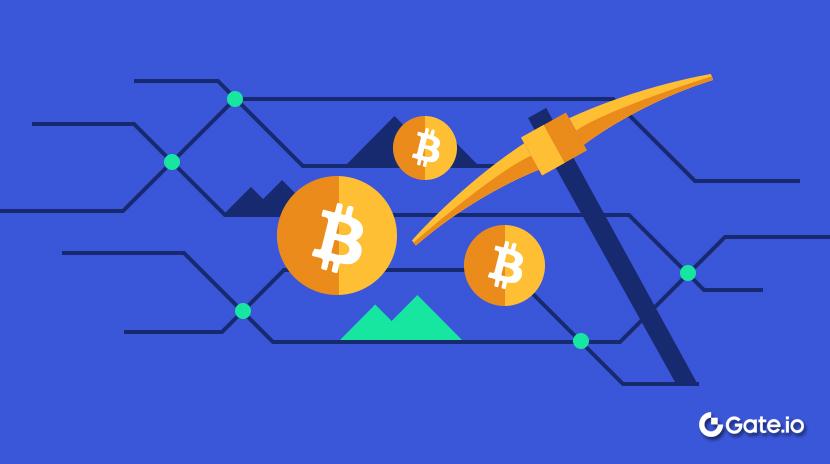Sự tiến hóa của LayerZero: Từ Cầu nối Cross-Chain đến Nền tảng
Chuyển tiếp Tiêu Đề Gốc ‘Siêu Người Trung Gian hay Thiên Tài Kinh Doanh? Nhìn Lại Hành Trình từ V1 đến V2 của LayerZero Sau Một Năm
Giới thiệu
Hôm nay, tầm quan trọng của cầu nối cross-chain vẫn rất rõ ràng.
Tuy nhiên, sự hào nhoáng xung quanh các token hạ tầng được hỗ trợ bởi VC đã mờ dần, đặc biệt sau cơn sốt của các bài viết, hình ảnh mèo và trí tuệ nhân tạo. Trong giai đoạn thị trường yên bình này, đây là thời điểm thích hợp để nhìn nhận một cách khách quan hơn về sự tiến hóa của lịch sử và khám phá những sự thật bền vững đằng sau nó.
Vào năm 2023, LayerZero nhanh chóng nổi lên với kiến trúc “nút siêu nhẹ” độc đáo và trở thành dự án nổi bật trong lĩnh vực cross-chain. Lúc đó, giá trị của nó lên đến 3 tỷ đô la Mỹ. Việc phát hành LayerZero V2 vào năm 2024 đã cho phép 30 triệu giao dịch cross-chain trên chuỗi, củng cố vị thế của nó là một trong những nhà lãnh đạo trong ngành.
Tầm nhìn của “omnichain” đã thu hút rất nhiều nhà phát triển và được sự ủng hộ của các nhà đầu tư hàng đầu như Sequoia Capital, a16z và Binance Labs. Đồng thời, tuy nhiên, nó đã đối mặt với sự chỉ trích về các vấn đề như tập trung quyền lực và an ninh, gây ra cuộc tranh luận rộng rãi trong ngành công nghiệp.
- Một số người đã chế giễu nó như là “rác công nghệ” hoặc một “siêu trung gian,” lập luận rằng phiên bản V1 chỉ là khung cơ bản không có bất kỳ chất lượng thực sự nào—về cơ bản chỉ là mô hình multisig 2-of-2. Những người khác cho rằng V2 tránh việc đảm nhận trách nhiệm bảo mật của mạng lưới xác minh cross-chain (DVN), gọi nó là một cú nhảy trống không để giành giá trị.
- Mặt khác, nhiều người tin rằng cách tiếp cận kinh doanh của LayerZero trong ba năm qua không có gì đáng kinh ngạc - một sự tái hiện hiện đại của các liên minh chiến lược và trò chơi quyền lực.
Điều gì là đúng và điều gì là sai? Hãy phân tích mô hình kinh doanh của nó thông qua góc nhìn về thiết kế kỹ thuật để đánh giá xem nền tảng của nó có thực sự vững chắc không—hay chỉ là một lâu đài được xây dựng trên cát.
1. Phân tích kỹ thuật: Sự tiến hóa kiến trúc của LayerZero và các giả định về bảo mật của nó
1.1 V1: Các nút siêu nhẹ và các rủi ro về bảo mật
LayerZero V1 (sau đây gọi là V1) giới thiệu khái niệm “Ultra Light Node (ULN)”. Lõi của nó là triển khai một hợp đồng điểm cuối nhẹ trên mỗi chuỗi như một điểm gửi và nhận tin nhắn. Hai thực thể ngoại chuỗi, Oracle và Relayer, hợp tác để hoàn thành xác minh tin nhắn qua chuỗi.

[Nguồn ảnh: Bản mẫu trắng chính thức của LayerZero V1, minh họa vai trò của Relayer và Oracle]
Về cơ bản, thiết kế này chuyển gánh nặng của đồng bộ khối và xác minh khỏi chuỗi sang Oracle và Relayer, giữ cho hợp đồng trên chuỗi cực kỳ nhẹ.
V1 đề cập đến cài đặt này như “sự tách biệt cuối cùng của sự tin cậy,” vì nó tránh việc triển khai một nút light đầy đủ của chuỗi nguồn trên chuỗi đích, cung cấp chi phí thấp đáng kể so với các kiến trúc cầu nối cross-chain khác.
Tuy nhiên, trong khi mô hình tin cậy “2 trên 2” này cung cấp hiệu quả, nó cũng đưa ra một số rủi ro bảo mật đáng chú ý:
- Rủi ro kết đồng: Sức chống chịu của mô hình đối với sự kết đồng hoàn toàn phụ thuộc vào sự tin tưởng xã hội và động cơ kinh tế, thiếu các cơ chế thi hành cryptoeconomic.
- Ranh giới trách nhiệm không rõ ràng: Cả Oracle và Relayer đều hoạt động ngoài chuỗi và V1 không có quyền kiểm soát trực tiếp hiệu suất của chúng. Nếu một trong hai thất bại — chẳng hạn như sự cố ngừng hoạt động của Oracle hoặc Relayer ngoại tuyến — không thể gửi tin nhắn chuỗi chéo, làm giảm tính khả dụng của hệ thống. (Ví dụ, vào năm 2023, cầu Stargate đã phải đối mặt với những lời chỉ trích là “sát thủ chuỗi chéo” do các vấn đề liên quan đến phí — cốt lõi của nó là vấn đề về tính khả dụng của dịch vụ.)
- Rủi ro cấp chuỗi: Hệ thống hoàn toàn phụ thuộc vào sự an toàn của các chuỗi công cộng kết nối, mà không có cơ chế hoà giải từ LayerZero chính để giảm thiểu rủi ro ở giữa.
- Nghi ngờ về phân quyền: Mặc dù V1 tuyên bố rằng bất kỳ ai cũng có thể vận hành Oracle và Relayer, biến chúng thành vai trò không cần phép, điều này không đúng trong thực tế. Trong cuộc bỏ phiếu đề xuất Uniswap qua các chuỗi khác nhau vào đầu năm 2023, một số thành viên cộng đồng đã đề xuất lo ngại về sự tập trung của V1, ưa thích mô hình của Wormhole với các xác minh viên cơ sở.
Để có một phân tích sâu sắc về cơ chế V1, tác giả trước đây đã công bố một bài phân tích toàn diện hai năm trước, vì vậy không sẽ không lặp lại ở đây: Báo cáo nghiên cứu về lĩnh vực cross-chain: Tại sao giao thức tương tác toàn chuỗi LayerZero được định giá tới 3 tỷ USD (Phần 1)
1.2 V2: Cơ chế DVN và phân tích bảo mật của nó
Vào đầu năm 2024, LayerZero ra mắt V2 (sau đây được gọi là V2), với đột phá cốt lõi của nó là việc giới thiệu Mạng Xác minh Phi tập trung (DVN) tại lớp xác minh - vượt xa mô hình ban đầu chỉ dựa vào Oracle và Relayer.

[Nguồn hình ảnh: Bản tóm tắt chính thức LayerZero V2, hiển thị việc bỏ phiếu DVN đa phương tiện tùy chọn]
Với sự trợ giúp của một mạng lưới bao gồm nhiều nút xác minh cho việc xác nhận chữ ký của các tin nhắn chuyển chuỗi, các nhà phát triển có thể chọn lựa và kết hợp nhiều DVN để xác minh tin nhắn theo yêu cầu ứng dụng, để chiến lược bảo mật không còn bị hạn chế trong mô hình 2 trên 2 cố định.
Rõ ràng, vẫn còn những lợi ích:
- DVNs có thể đến từ các nguồn đa dạng. Theo Giám đốc Chiến lược của LayerZero, Irene, các nhóm có thể vận hành DVNs riêng của họ hoặc tích hợp các cầu nối/mạng lưới cross-chain hiện có như DVNs. Ngay cả các nhóm nhỏ hoặc độc lập cũng có thể tham gia, đưa thêm các bên liên quan độc lập vào hệ thống. Càng nhiều người đóng góp, chiếc bánh càng lớn.
- Nhiều mô hình xác minh chéo có thể tồn tại cùng nhau. Cho dù đó là các nhà xác minh từ cầu chính thức của Arbitrum, 19 người bảo vệ của Wormhole, các nhà xác minh PoS của Axelar, hoặc các multi-sig dựa trên MPC—tất cả đều có thể phục vụ như một phần của lớp DVN.
- Các chiến lược xác minh do người dùng tự định nghĩa. Ví dụ, người dùng có thể kết hợp “Mạng Oracle Chainlink + LayerZero Labs DVN + Cộng đồng DVN” để điều chỉnh các ưu tiên bảo mật.
Đủ chưa?
Không, an ninh người dùng phụ thuộc vào mức độ ẩn náu của chiến lược chất lượng và kết hợp của chính DVN, hoặc trên bảng ngắn nhất của thùng:
- Các chiến lược bảo mật bị phân mảnh. Sức mạnh của các DVN khác nhau có thể khác nhau rất nhiều — một số có thể được hỗ trợ bởi các nút chuyên nghiệp với các mã thông báo được đặt cọc, một số khác có thể chỉ là multisigs với một vài thành viên. Không có tiêu chuẩn bảo mật thống nhất, dẫn đến một mạng lưới các silo bảo mật bị cô lập.
- Trong khi V2 khuyến khích việc sử dụng nhiều DVN kết hợp với nhau, quyết định cuối cùng nằm trong tay nhà phát triển ứng dụng. Nếu một nhà phát triển chọn sử dụng một DVN yếu một mình, điều này mang lại rủi ro. Trong thực tế, nếu một DVN đơn lẻ đủ mạnh, các DVN khác có thể không cần thiết — đặc biệt khi xem xét về chi phí hoặc tiện lợi. Để các DVN có hiệu quả, hình phạt cho sự thất bại phải vượt qua các phần thưởng tấn công tiềm năng, có thể được hỗ trợ bởi các biện pháp ngăn chặn pháp lý hoặc uy tín.
- Sự phức tạp lớn hơn mở ra các bề mặt tấn công mới. Các thiết lập Multi-DVN có thể mở cánh cửa cho các cuộc tấn công kỹ thuật thay vì chỉ là các cuộc tấn công kinh tế. Hãy lấy cầu Nomad làm ví dụ: mặc dù được thiết kế với sự xác minh lạc quan, một lỗi triển khai đã dẫn đến một vụ hack 190 triệu đô la.
1.3 Cách đánh giá sự chuyển đổi từ V1 sang V2 một cách kỹ thuật là thế nào?
- Đầu tiên, từ quan điểm tương thích
V2 ngày hôm nay là vua xứng đáng của tính tương thích. Nó có thể dễ dàng truy cập bởi EVM, SVM và thậm chí là hệ thống Move. Tài liệu hỗ trợ, các trường hợp sử dụng, cộng đồng phát triển và mối quan hệ với các nhà phát triển (cuộc thi hackathon, v.v.) đều là các tiêu chuẩn hàng đầu trong ngành. Những điều này giúp việc truy cập trở nên dễ dàng và cuối cùng trở thành một trong những giải pháp được ưa thích cho một số lớn các chuỗi khối công cộng mới.
- Thứ hai, từ quan điểm an ninh
Mặc dù V2 cung cấp một giới hạn trên mạnh mẽ hơn về bảo mật, nhưng giới hạn dưới cũng đã được giảm xuống. Cuối cùng, trong quá khứ, ít nhất cũng là một tổ chức truyền thông đáng tin cậy.
Nó trở thành một nền tảng thị trường hơn, cho phép các mạng xác minh khác nhau cạnh tranh để cung cấp dịch vụ bảo mật.
Tuy nhiên, từ quan điểm của người dùng, tranh chấp về trách nhiệm sẽ phát sinh sớm hay muộn. Hiện tại, công ty chỉ tuyên bố rằng họ chỉ cung cấp một thỏa thuận trung lập, và an ninh cụ thể được xác định bởi việc lựa chọn của DVN của ứng dụng. Khi có sự cố xảy ra, sẽ có sự trách nhiệm chéo nhau trong việc xác định trách nhiệm.
Chỉ cần nhìn vào biểu ngữ “phân quyền” hiện tại của V2, vẫn khá mơ hồ. DVN dường như đã loại bỏ các điểm đơn lẻ, nhưng hầu hết các ứng dụng vẫn có xu hướng sử dụng một vài kết hợp DVN được khuyến nghị chính thức, và việc kiểm soát thực tế của hệ thống vẫn nằm trong tay LayerZero và các tổ chức đối tác của nó.
Trừ khi mạng lưới DVN có thể phát triển hàng trăm hoặc hàng ngàn người xác minh độc lập và đảm bảo tính trung thực thông qua cơ chế trò chơi kinh tế mạnh mẽ (như cọc + trừng phạt), LayerZero vẫn sẽ không thể thoát khỏi bóng tối của sự dễ vỡ của mô hình tin cậy. Nhưng vào thời điểm đó, sẽ có những vấn đề liên quan đến lợi ích kinh tế sẽ ảnh hưởng đến động cơ của DVNs.
Tiếp theo, hãy đi vào góc độ kinh doanh và tiếp tục nghiên cứu
2. Sự thay đổi tinh tế trong cảnh quan Cross-Chain
2.1 Xu hướng lớn mà vốn tập trung vào
Hãy nhìn trực tiếp vào dữ liệu. Dưới đây là tình hình tài chính của mỗi dự án trong lĩnh vực Web3 từ năm 2022 đến 2024:

Vì các phân đoạn đường đua có thể không hoàn toàn nhất quán, các số liệu thống kê khác nhau có thể khác nhau. Các số liệu trong bài viết này chỉ phản ánh xu hướng. Khuyến nghị ưu tiên văn bản gốc. Đối với nguồn dữ liệu, xem liên kết tham khảo ở cuối bài viết:
Tổng thể:
Những điều đã giảm mạnh là các cơ sở Cefi. Hiểu của tôi ở đây là Cefi vẫn sẽ cần tài trợ vào năm 2022, trong khi những người có thể tạo ra nguồn tài chính tự chảy vào năm 23/24 đã sống sót để chiếm lĩnh thị trường, và không có khả năng cạnh tranh xung quanh Biển Đỏ, vì vậy tỷ lệ tổng thể đã giảm.
Trò chơi Web3 đã tăng mạnh vào năm 2024, do bùng nổ của Telegram (TG), nhưng từ quan điểm cá nhân, khi sự hụt hơi của TG dần biến mất, cả GameFi và trò chơi trên chuỗi khối đang bị thị trường nghi ngờ ngày càng nhiều - tiết lộ chính họ là những lĩnh vực dựa vào sự hào nhoáng với ít nhu cầu thực sự, hiện giờ chỉ còn lại những mảnh vụn.
Tôi sẽ không đi sâu vào tất cả các lĩnh vực ở đây, nhưng dù bạn nhìn nhìn nó như thế nào, cơ sở hạ tầng vẫn tiếp tục là khu vực đáng tin cậy nhất giữa sự không chắc chắn của thị trường.
2.2 Cơ sở hạ tầng cross-chain vẫn là một lĩnh vực đầu tư nóng hổi?
Trong hạ tầng—ngoài các Lớp 1—ví dụ nổi bật nhất là cầu nối giữa các chuỗi. Những lợi ích của lĩnh vực này rõ ràng:
- Khi hệ sinh thái đa chuỗi mở rộng, tính năng cross-chain trở nên cần thiết. Ai kiểm soát luồng cross-chain sẽ có cơ hội trở thành người thu phí trên “đường cao tốc” của thế giới đa chuỗi.
- Những điểm đau và cơ hội tồn tại cùng nhau: Cầu nối giữa các chuỗi được xem là những yếu tố quan trọng trong sự đổi mới Web3 - mở khóa các trường hợp sử dụng mới như DeFi giữa các chuỗi, NFT và danh tính giữa các chuỗi. Nhưng chúng cũng là mục tiêu thường xuyên của các vụ hack, chiếm gần 70% tổng số tiền bị đánh cắp trong không gian.
- Tác động mạng lưới và tiềm năng hào cản của nền tảng: Từ góc độ vốn, sức hấp dẫn lớn nhất nằm ở tiềm năng độc quyền hoặc oligopoly. Nếu một giao thức cross-chain trở thành tiêu chuẩn thực tế—tương tự như TCP/IP trong thời kỳ đầu của Internet—các nhà đầu tư sớm có thể thu lợi lớn. Điều này giải thích tại sao các công ty như a16z và Jump đấu tranh gay gắt với quyết định cross-chain của Uniswap.
- Cầu giao cắt không chỉ dành cho việc chuyển tài sản: Mặc dù thường được coi là công cụ để chuyển đổi mã thông báo, sự quan tâm vốn hóa thực sự nằm ở “cầu thông điệp tùy ý” (AMBs) - mà cho phép giao tiếp tổng quát giữa các chuỗi. Các dự án như LayerZero và Hyperlane đã định vị mình là các giao thức giao tiếp toàn bộ chuỗi.
Tóm lại, sự bùng nổ của lợi ích vốn đầu tư vào lĩnh vực cross-chain được thúc đẩy bởi sự kết hợp của nhiều yếu tố: nhu cầu ngay lập tức và những thách thức chưa giải quyết tạo ra sự cấp bách trong thế giới thực, và cuộc đua chiến lược để thiết lập tiêu chuẩn trong một tương lai đa chuỗi ngày càng liên kết.
Tuy nhiên, trong khi có rất ít vòng gọi vốn mới cho các cầu nối qua chuỗi trong năm 2024, điều này không có nghĩa là ngành đã mất sức hấp dẫn—đơn giản là đã quá trưởng thành và cạnh tranh để những người chơi mới tham gia dễ dàng, và bản chất của các sản phẩm cầu nối đã phát triển trong thị trường hiện tại.
2.3 Vai trò phát triển của cầu kết nối đa chuỗi A và B trong xu hướng đa chuỗi
Trong những ngày đầu của blockchain, các cầu nối giữa chuỗi thông thường hoạt động như các nhà cung cấp dịch vụ độc lập. Nhưng khi hệ sinh thái ứng dụng đa chuỗi trưởng thành, vai trò của họ đang dần chuyển hướng thành nhà cung cấp cơ sở hạ tầng cơ bản (các nhà chơi B-side)—ngày càng được tích hợp vào trải nghiệm ứng dụng và ví:
- Chức năng cross-chain đang trở nên hướng tới phía backend, dựa trên dịch vụ và gần như giống API. Ví dụ, các ví như MetaMask và OKX đã tích hợp các trình tự gộp cầu nối. Kết quả là, cầu nối không còn tương tác trực tiếp với người dùng cuối (phía C); thay vào đó, chúng thu hút lưu lượng thông qua các nền tảng phía B như DApps và ví. Sự chuyển đổi này có nghĩa là các giải pháp cross-chain phải dễ tích hợp, linh hoạt và thích nghi với nhu cầu ứng dụng. Nếu không, các ứng dụng sẽ đơn giản chọn một nhà cung cấp khác - cầu nối hiện đang hoạt động theo mô hình B2B.
- Sự phân cực ngày càng tăng về quyền ra quyết định: Trong mô hình “cầu nối kiểm soát người dùng” ban đầu, cầu nối quyết định xem hỗ trợ chuỗi nào và thu phí bao nhiêu. Các dự án phải thích nghi với các điều khoản của cầu nối - điều này vẫn đúng với các chuỗi mới hơn. Tuy nhiên, trong các dự án hệ sinh thái lớn, quy luật đảo ngược. Ví dụ, khi Uniswap triển khai trên BSC, nó chọn giải pháp giao chuỗi thông qua bỏ phiếu quản trị - buộc các cầu nối phải cạnh tranh để tích hợp.
Một lần nữa, việc đảo ngược vai trò đã diễn ra. Trong mô hình V1 ban đầu của LayerZero, nó phụ thuộc vào các nguồn tin cậy hoặcacles - đặt cầu nối vào vai trò phụ và oracles trong vai trò kiểm soát (A-side).
Với sự ra mắt của V2, tuy nhiên, sự xuất hiện của nhiều DVN cạnh tranh đã thay đổi cấu trúc quyền lực: LayerZero đã trở thành A-side, trong khi DVNs - người hiện tại thực hiện xác nhận cross-chain - hoạt động như nhà cung cấp B-side. Tự nhiên, để đảm bảo vị trí hoặc tầm nhìn tốt hơn, những DVN này sẽ điều chỉnh điều khoản chia sẻ doanh thu của họ với LayerZero.
Luôn hấp dẫn hơn khi sở hữu nền tảng hơn là chỉ là một cửa hàng — gần với luồng giao dịch, nhưng không chạm vào sự lộn xộn. Không nghi ngờ, việc tái vị trí của LayerZero như một nền tảng đã góp phần trực tiếp vào sức ảnh hưởng hiện tại của nó trên thị trường.
Chiến lược liên minh và tích hợp của LayerZero 2.4
Vai trò của LayerZero là duy nhất: nó định vị bản thân mình như một cơ sở hạ tầng công cộng cho việc giao tiếp qua chuỗi, nhưng nó không giả định trách nhiệm kinh doanh từ đầu đến cuối.
Là người đã chứng kiến một thập kỷ sự thống trị của nền tảng trong internet di động, không thể không nhận ra cuốn sách quen thuộc này: chi trả ban đầu để giành thị phần, sau đó tối ưu hóa lợi nhuận trong quá trình hợp nhất.
Sau khi nền tảng hóa, trách nhiệm an ninh được gỡ bỏ.
Như đã đề cập trước đó, LayerZero cung cấp cho các nhà phát triển ứng dụng hoàn toàn kiểm soát đối với lựa chọn bảo mật của riêng họ thông qua DVNs—về cơ bản cho phép mỗi ứng dụng ‘sở hữu mô hình bảo mật của riêng mình’. Từ quan điểm pháp lý, trong trường hợp khai thác qua mạng lưới, LayerZero Labs có thể khẳng định rằng nó không tham gia vào việc giữ tài sản. Trách nhiệm sau đó sẽ rơi vào DVNs hoặc ứng dụng chính nó.
Chia sẻ lợi nhuận thay thế cho các khoản hỗ trợ: Không giống như nhiều dự án hạ tầng khác thu hút người dùng bằng các khuyến mãi và hỗ trợ, LayerZero ưa chuộng sự phù hợp lợi ích—như đầu tư vào các dự án đối tác hoặc mời họ đầu tư vào LayerZero.
Một số chuỗi thậm chí còn phân bổ quỹ sinh thái để khuyến khích các giao thức tích hợp với LayerZero. Trên mặt tài chính và đối tác, LayerZero Labs đã thu hút các nhà chơi lớn trên tất cả các lĩnh vực (Coinbase và Binance là cổ đông, chưa kể a16z, Circle và nhiều người khác), tạo ra một mạng lưới hậu cần VC và tổ chức mạnh mẽ - điều này thực tế cho thấy sự ủng hộ rộng rãi từ những người chơi chủ chốt trên các hệ sinh thái blockchain.
Tại sao việc tìm thấy Series C của LayerZero lại khó khăn đến vậy?
Hãy nhìn vào nó từ một góc độ khác: LayerZero đã hoàn thành vòng gọi vốn Series B (với mức định giá 3 tỷ đô la), và đã hai năm kể từ đó. Vậy vòng gọi vốn Series C cần quy mô như thế nào để đáp ứng mong đợi của thị trường?
Hãy bắt đầu với khối lượng giao dịch. Theo dữ liệu chính thức - và so sánh số liệu hiện tại với con số từ một năm trước:

[Nguồn: Trang web chính thức của LayerZero]
Tổng số tin nhắn đã đạt 144 triệu, tăng từ khoảng 114 triệu vào một năm trước. Đó là một sự tăng hàng năm 30 triệu tin nhắn—chỉ là tốc độ tăng trưởng 26.3%, đáng chú ý chậm hơn so với 2022–2023.
Rõ ràng, lý do chính là việc ra mắt token của dự án đã hấp thụ một phần lớn hoạt động dựa trên airdrop. Trong khi ra mắt token tạo ra lợi nhuận, nó về cơ bản là kéo về phía trước doanh thu tương lai. Nhưng khi đến giá trị dự án, cuối cùng nó phải điều chỉnh với doanh thu thực tế.
Bây giờ đây là nơi mọi thứ trở nên ngượng ngùng—hãy thử đưa ra ước lượng doanh thu sơ bộ dựa trên khối lượng giao dịch: 30 triệu × $0.10 = $3 triệu/năm
$0.10 mỗi giao dịch là một loại phí điển hình cho các chuyển khoản quy mô nhỏ qua cầu nối giữa chuỗi khối. Đối với các chuyển khoản lớn, doanh thu thường đến từ các loại phí dựa trên việc stake. Tỷ lệ trung bình trên thị trường là khoảng 0.05%. Đối với Stargate, một cầu nối được xây dựng trên LayerZero, người dùng trả khoảng 0.06% mỗi giao dịch.
Giả sử có tổng khối lượng chuyển khoản là 10 tỷ đô la trong năm qua (ước lượng bằng cách so sánh số lượng tin nhắn với tổng số lượng sử dụng), một khoản phí 0.06% sẽ tạo ra doanh thu là 6 triệu đô la.
Vì vậy, theo bất kỳ ước lượng nào, một phạm vi hợp lý cho doanh thu hàng năm gộp là giữa 3 triệu đô la và 6 triệu đô la. Nhưng khi tính vào các chi phí hoạt động, rất có khả năng dự án vẫn đang hoạt động thiệt hại.
Do đó, ngay cả khi chúng ta hoàn toàn bỏ qua chi phí và sử dụng con số doanh thu cao hơn, giá trị ước tính 3 tỷ đô la cho tỷ lệ giá trị cổ phiếu so với lợi nhuận (P/E) là 500. Để so sánh, ngay cả những tập đoàn công nghệ “bong bóng” bị chỉ trích nặng nề như Apple hoặc Amazon thường giao dịch với P/E xung quanh 30.
Vậy rõ ràng, một vòng gọi vốn Series C mạnh mẽ là không thể trong tương lai gần. Không có nhà đầu tư nào háo hức ủng hộ một định giá P/E 500x dưới điều kiện thị trường hiện tại.
Kết luận
Sau hai năm, việc xem xét lại LayerZero không chỉ cho thấy những đột phá sáng tạo mà còn là cái nhìn sâu hơn về những gì một thế hệ tiếp theo của những cầu nối cross-chain có thể trông như thế nào. Ở đây, tôi sẽ đưa ra một số phản ánh khách quan như thức ăn cho tư duy.
Chỉ trong ba năm, LayerZero đã đi từ không đến một - từ một người theo đuổi trở thành một người dẫn đầu trong không gian cross-chain.
Với V1, nó giới thiệu khái niệm “Ultra Light Node” sáng tạo - kết hợp mô hình 2-of-2 multisig nhẹ với các nhà tiên tri - để nhanh chóng chiếm lĩnh thị trường với tốc độ và đơn giản.
Với V2, nó chuyển đổi thành một nền tảng thông qua chiến lược “framework-as-protocol”, tích hợp sâu với hệ sinh thái đa chuỗi. Cách tiếp cận thông minh đối với “risk offloading” đảm bảo một nền tảng ổn định. Ngày nay, nó hỗ trợ số lượng và đa dạng chuỗi lớn nhất trên thị trường, mạnh mẽ củng cố vị thế của mình là người đi đầu ngành.
Trong khi một số nhà phê bình cho rằng LayerZero tránh được “công việc bẩn” (tức là xác minh DVN) và chỉ hoạt động như một người trung gian, trên thực tế, đây là bản chất của mô hình kinh doanh thành công của nó: tập trung vào việc xây dựng một tiêu chuẩn lớp cơ sở phổ quát, ổn định và để lại chi tiết triển khai cho thị trường. Là một nền tảng, nó tận dụng động lực cạnh tranh của những người chơi hạ nguồn để nắm bắt giá trị.
Phương pháp này hoàn toàn phù hợp với nhu cầu của một thế giới đa chuỗi, nơi sự xuất hiện nhanh chóng của các chuỗi mới đòi hỏi cơ sở hạ tầng chéo chuỗi mạnh mẽ — và nó phản ánh sự chuyển đổi rộng lớn của các cầu từ vai trò chiếm ưu thế (phía A) sang dịch vụ hỗ trợ (phía B).
Từ một quan điểm kỹ thuật, sự tiến hóa từ V1 đến V2 phản ánh sự cố gắng liên tục của ngành công nghiệp để cân bằng giữa phân cấp và bảo mật. Mô hình Oracle + Relayer và cơ chế DVN đều khuyến khích chúng ta suy nghĩ lại về ranh giới của việc giảm thiểu sự tin cậy.
Theo quan điểm của tác giả, trong khi V2 có thể chưa đạt được sự phân quyền đầy đủ trong thực tế, nó vẫn có tiềm năng lý thuyết để làm được điều đó. Nhưng trong thực tế, không phải thị trường hay người dùng nào cũng yêu cầu sự phân quyền cực độ ở tần suất cao.
Từ quan điểm kinh doanh, chiến lược hướng nền tảng của LayerZero đáng để nghiên cứu. Bằng việc tập trung vào các tiêu chuẩn của nhà phát triển, nó đã đạt được sự tương thích không thể vượt qua. Thông qua tính mô đun hóa và tiêu chuẩn hóa, nó đã trở thành ngọn đuốc mà nhiều người có thể tụ tập xung quanh, thay vì một cái lò đơn độc đốc đốc đốc.
Mô hình này giảm thiểu rủi ro của LayerZero. Trong khi chia sẻ lợi nhuận với DVNs, nó đã tạo điều kiện cho sự phát triển của một hệ sinh thái lớn hơn nhiều.
Về ước lượng P/E trước đó, trong tình hình thiếu thông báo chi phí chính thức, nó vẫn là một phân tích dự đoán. Cũng có khả năng LayerZero có thể chuyển hướng từ việc tính phí cho giao dịch qua chuỗi sang việc tạo thu nhập thông qua quản lý tài sản hoặc các phương tiện khác—và sự chuyển đổi đó có thể nhanh chóng mở khóa doanh thu đáng kể. Cuối cùng, trong mọi thời đại, lưu lượng là vua—và các độc quyền luôn mang lại lợi nhuận khủng khiếp.

[Nguồn: CoinMarketCap]
Cuối cùng, một cách khác để đo lường giá trị là nhìn vào vốn hóa thị trường của token. Nếu $7B phản ánh sự hối hả cao điểm, thì chúng ta nên hiểu thế nào với $2B ngày nay?
Miễn trừ trách nhiệm:
- Bài viết này được sao chép từ [GateFourteenth Lord]. Chuyển tiếp Tiêu Đề Gốc ‘Siêu Trung Gian hay Thiên Tài Kinh Doanh? Nhìn Lại Hành Trình của LayerZero Từ V1 đến V2 Sau Một Năm’. Bản quyền thuộc về tác giả gốc [GateFourteenth Lord], if you have any objections to the reprint, please contact the Gate Learnđội ngũ, và đội ngũ sẽ xử lý nó càng sớm càng tốt theo các quy trình liên quan.
- Bản quyền: Các quan điểm và ý kiến được thể hiện trong bài viết này chỉ đại diện cho quan điểm cá nhân của tác giả và không cấu thành bất kỳ lời khuyên đầu tư nào.
- Các phiên bản bằng ngôn ngữ khác của bài viết được dịch bởi nhóm Gate Learn và không được đề cập trong Gate.com, bài dịch không được sao chép, phân phối hoặc đạo văn.
Bài viết liên quan

Tronscan là gì và Bạn có thể sử dụng nó như thế nào vào năm 2025?

Coti là gì? Tất cả những gì bạn cần biết về COTI

Stablecoin là gì?

Mọi thứ bạn cần biết về Blockchain

HODL là gì
